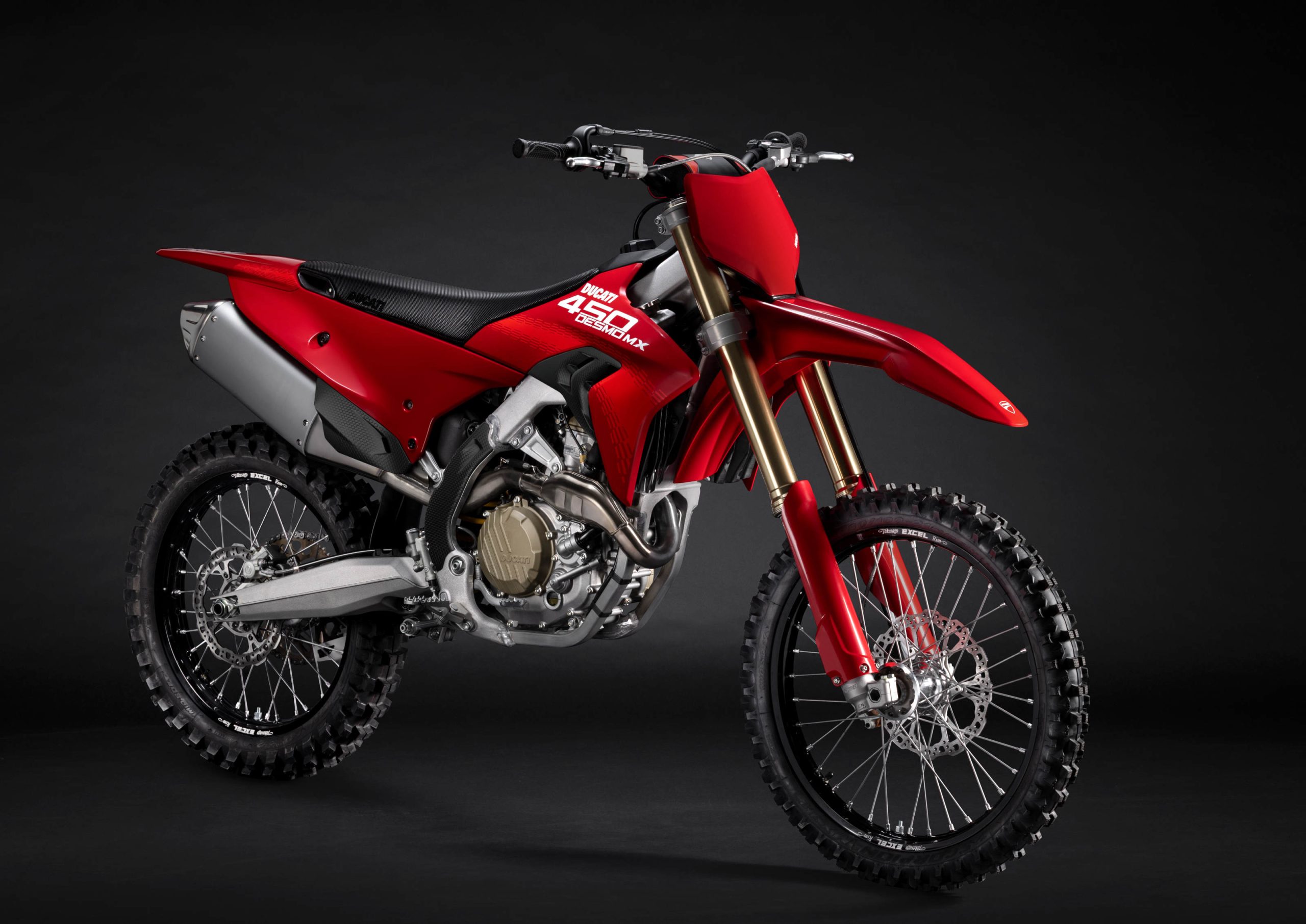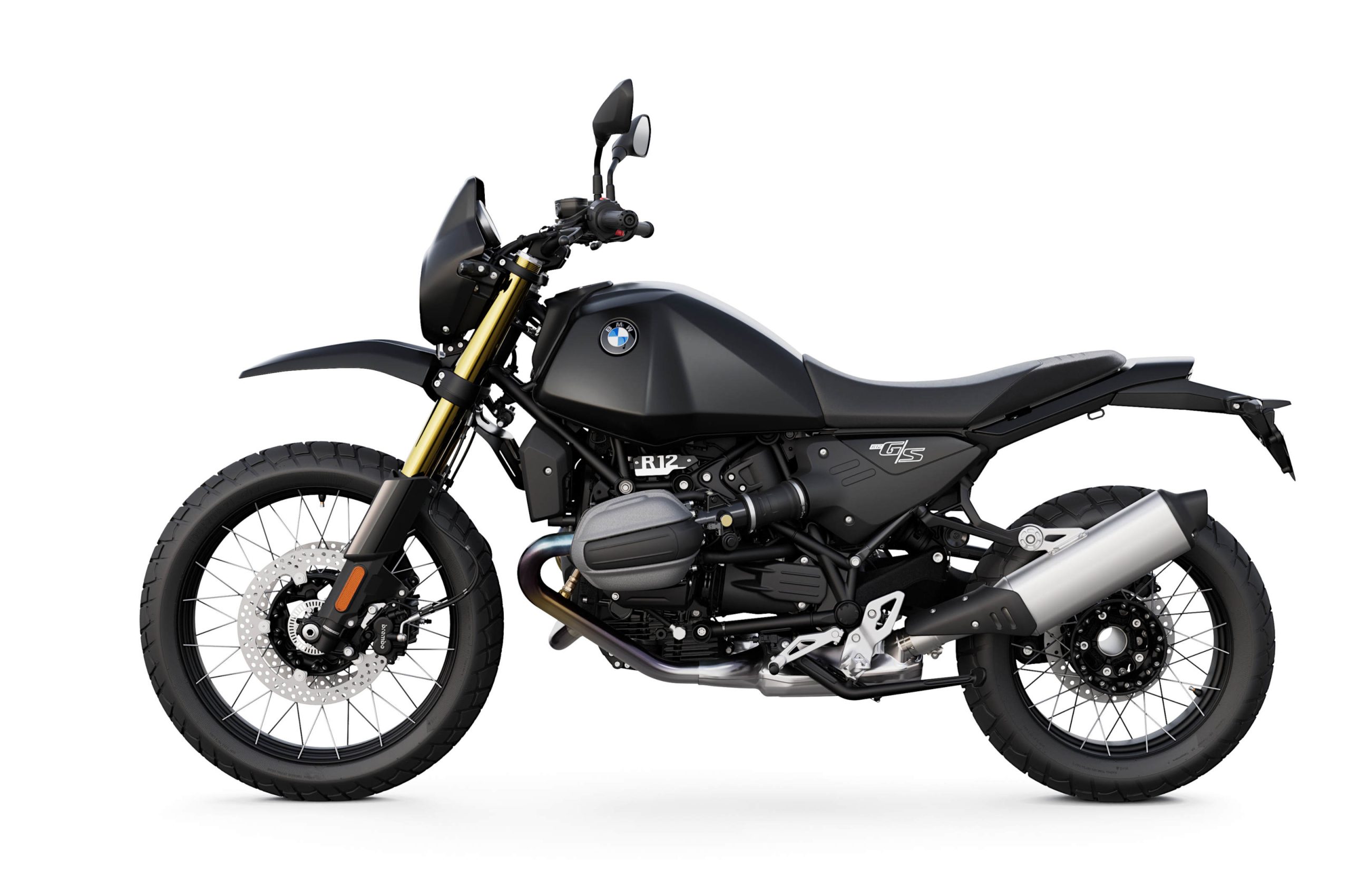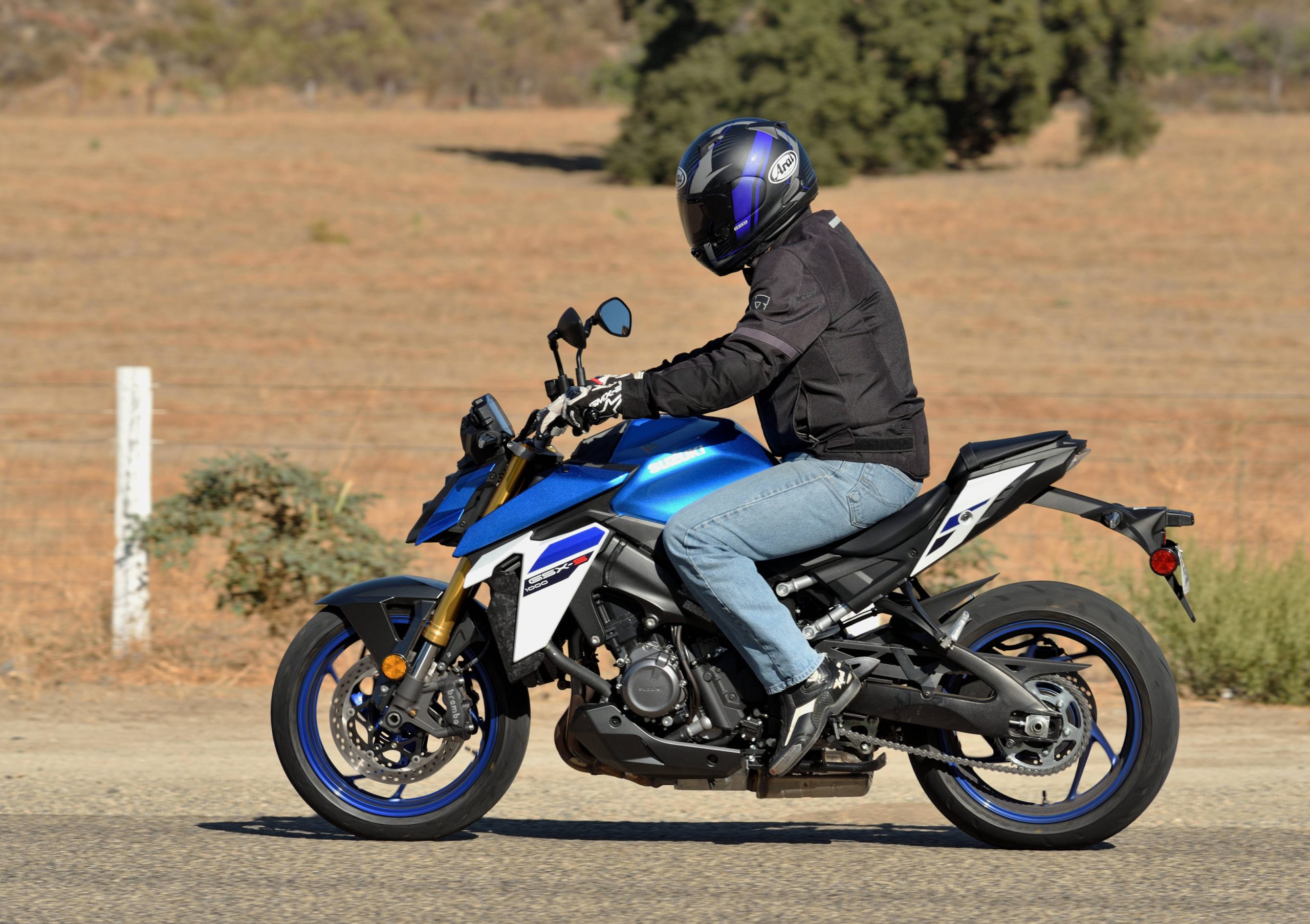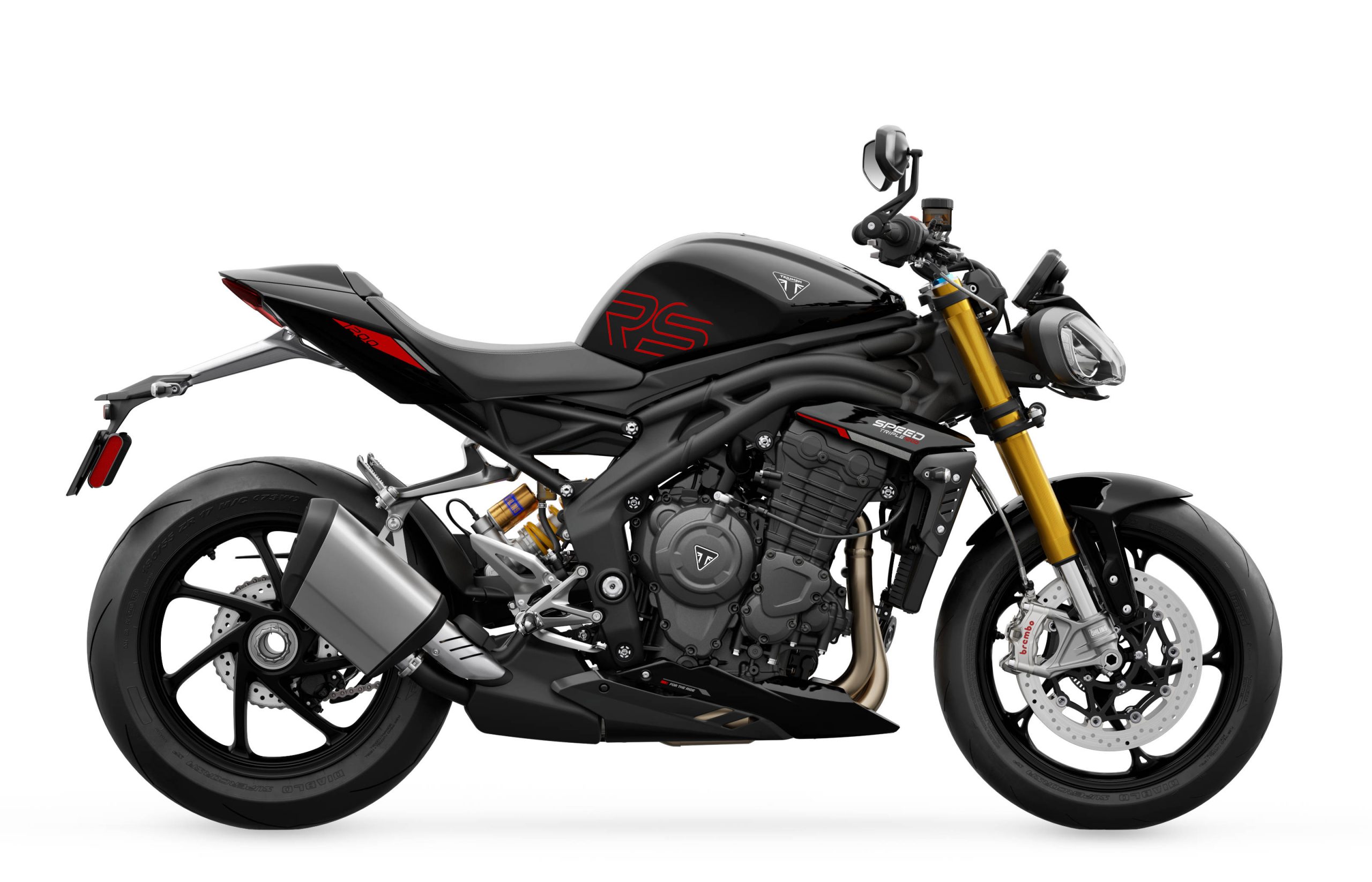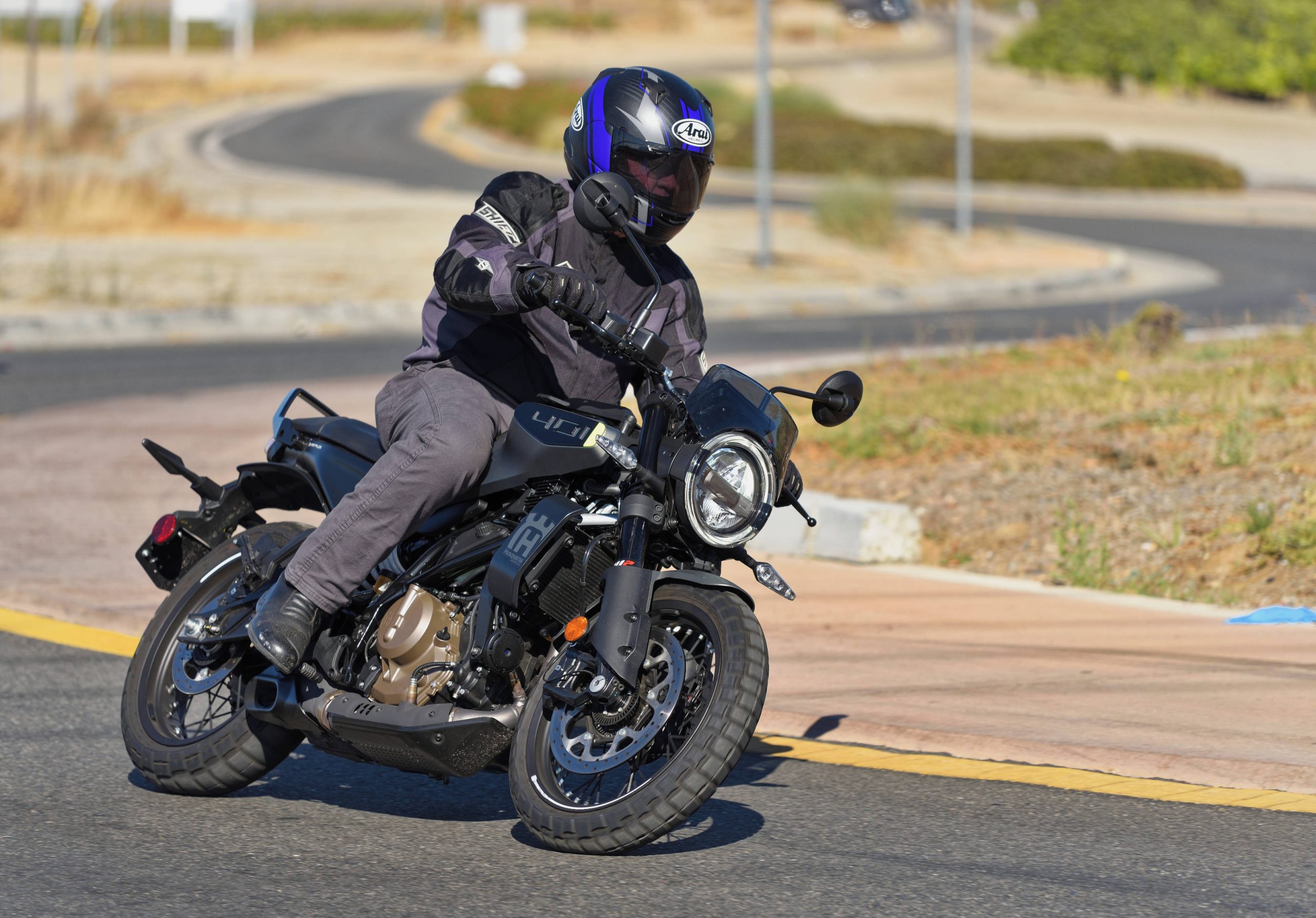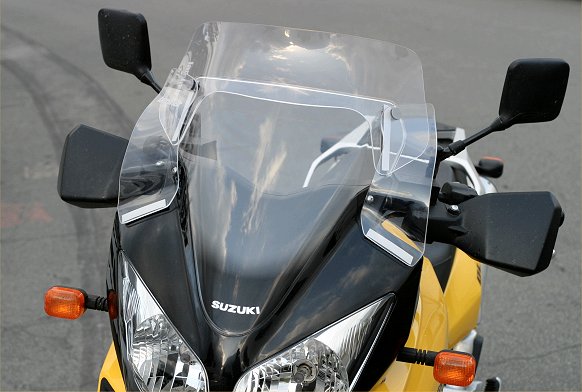
We have put another 1,200 miles on our V-Strom test bike since we last updated our readers. With a total of 2,500 miles on the clock, the motor continues to loosen up, produce more power and improve gas mileage. We are now averaging 43 mpg, up from 41 in our first report.
We wanted to focus our readers on some basic set-up suggestions, as well as our further efforts to minimize turbulence from the stock windscreen.
Focusing first on set-up, as we have said in prior articles, the stock V-Strom comes from your dealer, typically, with too little weight on the front wheel. It rides a bit “chopper-like”, until you make some minor adjustments to better balance the bike.

When we tested the V-Strom for the first time in 2002 (you can reference our review here), we compensated for this rearward weight bias by cranking in lots of shock preload. After more time on the bike, and further experimentation, we have arrived at a suggested set-up that makes the bike handle much better, including more direct, responsive steering, and even improved stability in a straight line.
We began by raising the fork tubes in the triple clamps so that 15mm of the fork sits above the top triple clamp. Measure the 15mm from the top edge of the top triple clamp to the top of the largest diameter cap sitting on top of the fork tube (the cap which is the same diameter as the fork tube itself).
Next, you set the preload of the shock so that it is on the third line from the softest setting. Take a look at the photos to the right. The top photo shows the minimum preload (with the black knob turned to the left until no lines are showing on the shock body), while the bottom photo shows shock preload on the third line, as suggested. To achieve this, turn the black knob on the right side of your bike (near the shock body) to the right until you line up with the third line on the shock body, as indicated.

With my 200 pounds aboard, the V-Strom handles fantastically with the above set-up installed. It combines excellent agility with solid stability — all you can ask.
Adjusting the fork preload is probably not as important, but we did play with fork preload nonetheless. The setting we ended up with was flush with the third line from the top of the preload adjuster screw. This seemed to balance out the rebound characteristics of the fork, without making the fork too harsh. By the way, the fork seemed fairly harsh on small, stutter bumps when we first received our test unit, but 2,500 miles of riding have smoothed out the fork action considerably (perhaps, the springs have settled a bit). In any event, the preload-adjustable fork on the 2003 model V-Strom may not be quite as supple in the initial part of its stroke as the non-adjustable 2002 model.
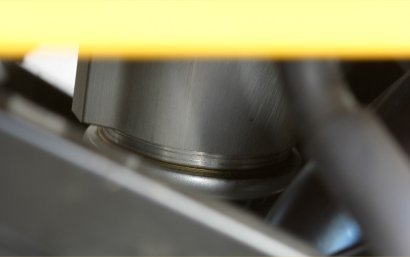
Finally, we have been experimenting with the Laminar Lip we added to the stock windscreen earlier, and have added the “ears” provided by the same company (see the picture at the top of this article). We are still using the stock screen, but we raised the Laminar Lip approximately 1/4 inch from its previous position, and added the ears. At 5’10” (with a long torso, and short legs), without cross winds, the flow of air behind the screen is virtually silent up to 55 miles per hour, or so. Above that, it becomes progressively noisier, but it always remains substantially improved over the stock set-up (which buffets quite severely at higher speeds). By the way, from my own experience, taller windscreens are not always the means to reduce wind buffeting. Sometimes taller screens make it worse. Additionally, as you will find on some stock models (Honda’s Interceptor comes to mind), allowing the wind to flow under the tallest part of the screen (I believe it is sometimes called a naca duct) actually reduces turbulence (buffeting and noise) behind the screen. The Laminar Lip allows plenty of air underneath the trailing edge of the wind screen, and this seems to be part of why it works so well.
The V-Strom has been maintenance free, so far. Additionally, it continues to impress us with its versatility — functioning reasonably well as a sport tourer, sport bike and dual sport, depending on our mood. Although Suzuki does not recommend use of the V-Strom off road, I rode the bike to the first round of the AMA/Chevy Trucks U.S. Motocross championship series in San Bernardino, California. Approximately two miles from the track, I took an off-road detour to avoid a huge traffic jam, and the V-Strom handled it just fine (a lot better than the sport tourer ridden by my buddy trying to follow me). Stay tuned for further updates on our long-term V-Strom.

